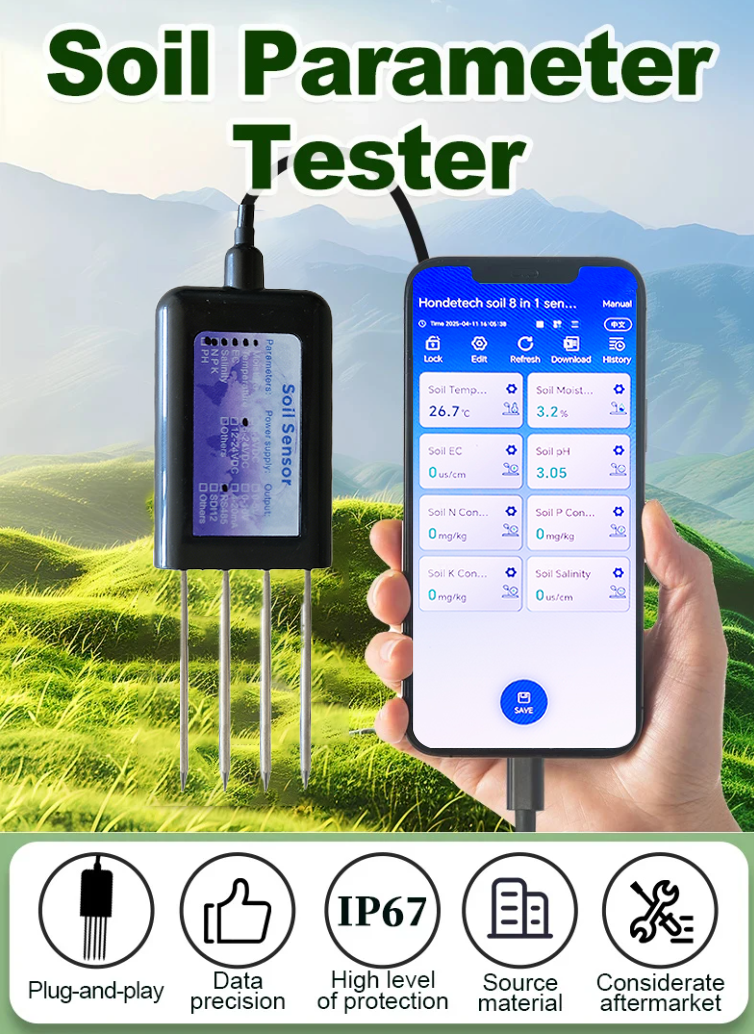With climate change and the development of intensive agriculture, Southeast Asian countries (such as Thailand, Vietnam, Indonesia, Malaysia, etc.) are facing problems such as soil degradation, water shortage and low fertilizer utilization. Soil sensor technology, as a core tool for precision agriculture, is helping local farmers optimize irrigation, fertilization, and increase crop yields.
This article analyzes the implementation model, economic benefits and promotion challenges of soil sensors in Southeast Asia through application cases in four typical countries.
1. Thailand: Water and nutrient management of smart rubber plantations
Background
Problem: Rubber plantations in southern Thailand have long relied on empirical irrigation, resulting in water waste and unstable yields.
Solution: Deploy wireless soil moisture + conductivity sensors, combined with real-time monitoring on mobile phone APP.
Effect
Save 30% water and increase rubber yield by 12% (data source: Thai Rubber Research Institute).
Reduce fertilizer leaching and reduce the risk of groundwater pollution.
2. Vietnam: Precision fertilization system for rice fields
Background
Problem: Overfertilization of rice fields in the Mekong Delta leads to soil acidification and rising costs.
Solution: Use near-infrared sensors + AI fertilization recommendation system.
Effect
Nitrogen fertilizer use reduced by 20%, rice yield increased by 8% (data from Vietnam Academy of Agricultural Sciences).
Suitable for small farmers, single test cost <$5.
3. Indonesia: Soil health monitoring in palm oil plantations
Background
Problem: Sumatra palm plantations have long-term monoculture, and soil organic matter has decreased, affecting yield.
Solution: Install soil multi-parameter sensors (pH+humidity+temperature), and combine servers and software to view real-time data.
Effect
Accurately adjust the amount of lime applied, optimize soil pH from 4.5 to 5.8, and increase palm fruit oil yield by 5%.
Reduce manual sampling costs by 70%.
4. Malaysia: High-precision control of smart greenhouses
Background
Problem: High-end vegetable greenhouses (such as lettuce and tomatoes) rely on manual management, and the temperature and humidity fluctuate greatly.
Solution: Use soil sensors + automated irrigation systems.
Effects
Reduce labor costs by 40%, and increase the quality of vegetables to 95% (in line with Singapore export standards).
Remote monitoring through cloud platforms to achieve “unmanned greenhouses”.
Key success factors
Government-enterprise cooperation: Government subsidies reduce the threshold for farmers to use (such as Thailand and Malaysia).
Localized adaptation: Choose sensors that are resistant to high temperature and humidity (such as the case of Indonesian palm plantations).
Data-driven services: Combine AI analysis to provide executable suggestions (such as the Vietnamese rice system).
Conclusion
The promotion of soil sensors in Southeast Asia is still in its early stages, but cash crops (rubber, palm, greenhouse vegetables) and large-scale staple food (rice) have shown significant benefits. In the future, with the reduction of costs, policy support and the popularization of digital agriculture, this technology is expected to become a core tool for sustainable agriculture in Southeast Asia.
For more weather station information,
please contact Honde Technology Co., LTD.
Tel: +86-15210548582
Email: info@hondetech.com
Company website: www.hondetechco.com
Post time: Jun-12-2025


